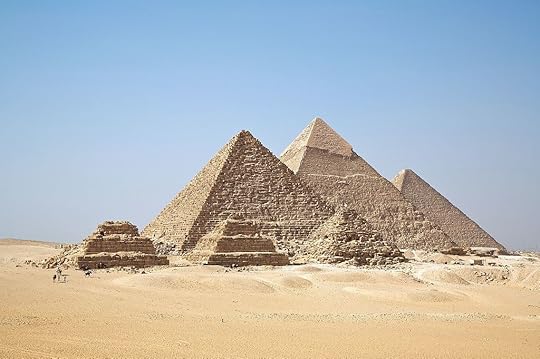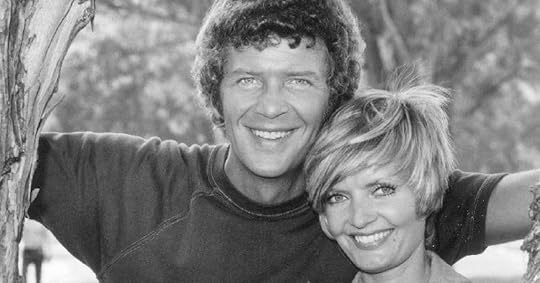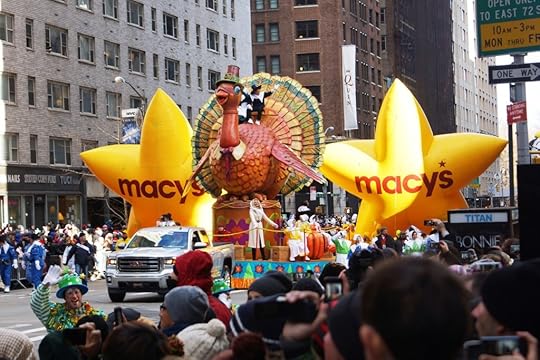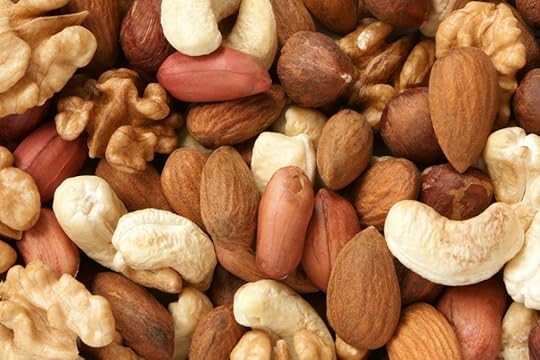Bathroom Readers' Institute's Blog, page 71
November 30, 2016
The Hottest Toys of Holidays Past You May Have Forgotten
You probably remember the Cabbage Patch Kids frenzy of ’83, or the Tickle Me Elmo craze of ’96. But do you recall these other hot toys of yesteryear?
1934
A doll made in the likeness of extremely popular child star Shirley Temple was one of the first designed in the image of a celebrity, and one of the first ever hot toy crazes to sweep the nation. Despite the doll being released right in the middle of the Great Depression, more than $45 million worth of Shirley Temple dolls (at about $3 a piece) sold between 1934 and 1941.
1973
For better or for worse, Baby Alive was one of the most realistic dolls in toy history. The original Baby Alive (it’s still produced today) didn’t talk or crawl or anything like that. No, Baby Alive came with special “food” packets that budding fake parents could mix with water and then “feed” to the doll with a spoon. Spoon in mouth triggered a chewing mechanism, and the food would actually be ingested by Baby Alive. Then, sometime later, a little mess would appear in the diaper.
1991
Before the line of Super Soakers were released, squirt guns were small, cheap, sold at drugstores for under a buck, and could hold just a few ounces of water that could be sprayed a good six feet or so. Super Soakers made squirt guns into powerful water cannons. The brightly colored guns were outfitted with both quart-size (or more) water reservoirs and pump handles. These enabled kids to spray a thick stream of water 20 feet or more. The hot toy of the 1991 holiday season (and several subsequent summers) more than 200 million Super Soakers have been sold.
2009
For a brief period of time, robot hamsters were all the rage. Zhu Zhu Pets were essentially battery powered toy cars that would zip around the floor, but they were covered in fake fur and make squeaking and sniffing sounds, so they looked just like mechanical rodents. Over the course of 2009, more than $70 million worth of Zhu Zhu Pets were sold—which includes the many accessories available, such as little houses and tunnels for the things to crawl around in.
The post The Hottest Toys of Holidays Past You May Have Forgotten appeared first on Trivia Books and Facts | Uncle John's Bathroom Reader.
November 29, 2016
How Did That Get There?
Keep digging for answers, because these historical finds make zero sense.
Cocaine in Ancient Egypt?
How could Egyptian mummies—ranging from 800 to 3,000 years old—have traces of cocaine and tobacco in their hair, skin, and bones? Cocaine and tobacco come from plants that grew only in the still-undiscovered New World and weren’t accessible to Egyptians. Tobacco wasn’t introduced to the Old World until the Arawak tribe gave some to Columbus in 1492.
After scientist Svetlana Balabanova made the strange discovery at the Egyptian Museum in Munich, she tested hundreds more mummies from the Old World. Interestingly, cocaine was found only in the Munich museum’s mummies. Some experts speculated that reckless, cocaine-using archaeologists there had contaminated the bodies. The tobacco, though, was a bigger mystery. A third of the mummies Balabanova studied contained nicotine, and evidence of tobacco had been found in the stomach of King Ramses II and in King Tut’s tomb. But no one can say for sure how it got there.
A Biblical Tablet in New Mexico?
According to the Bible, Moses climbed Mt. Sinai in Egypt, where God gave him the Ten Commandments. But was Moses ever in New Mexico?
That’s where, in the 1930s, a 90-ton rock carved with the Ten Commandments in ancient Hebrew was discovered near Los Lunas. The find baffled archaeologists and historians alike. The Hebrew inscription also contains Greek letters, which led some to conclude that ancient Samaritans wrote it. One problem: Samaritans lived on the other side of the planet; some characters on the rock had been used as far back as the seventh century B.C., long before explorers set foot in the New World.
It may seem like a hoax, but a geologist dated the rock and the carvings at 500 to 2,000 years old. That puts it in pre-Columbian times, when the only people known to live in that region were Native Americans…who had no way of knowing ancient Hebrew or Greek.
So who did carve the rock? And who put it there? It remains a mystery.
Nan Madol: A Floating Atlantis
Around 1,000 years ago, in Micronesia, a tribe known as the Saudeleur conquered the island of Pohnpei and then built the city of Nan Madol…in the ocean on top of coral reefs. Workers quarried nearly a million tons of basalt blocks, some weighing 100,000 pounds, and transported them offshore—forming 92 artificial islands across 200 acres, complete with columns, huge walls, and underwater tunnels. They connected the islets via a complex series of viaducts and canals.
For 500 years, Nan Madol was a major hub that served as a temple, the seat of Pohnpei’s government, and home to the society’s elite. Still, no one knows how humans were able to engineer this archaeological wonder in an era before construction machines, diving gear, and concrete. (The Pohnpeians’ explanation: A sorcerer built the city.)
The post How Did That Get There? appeared first on Trivia Books and Facts | Uncle John's Bathroom Reader.
3 of the Biggest Box Office Bombs of All Time
You’ve probably never seen these movies. That’s why they’re on this list.
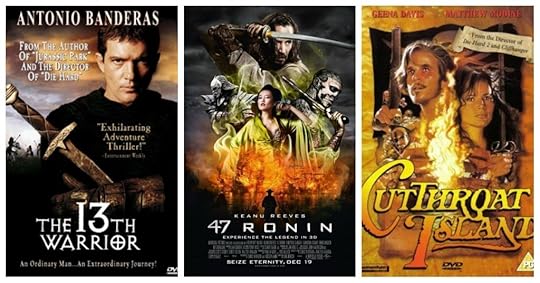
The 13th Warrior
In the ‘90s, several adaptations of works by Michael Crichton were among the most successful projects in Hollywood. The 1993 big-screen version of his novel Jurassic Park was the top movie of the year, and successful movies of Rising Sun, Disclosure, and Congo followed. The TV smash ER was based on a screenplay that Crichton, a former doctor, wrote in the ’70s. So, it looked like Disney would have a hit on their hands with the 1999 film The 13th Warrior, based on Crichton’s Eaters of the Dead, a medieval adventure tale based on the ancient legend of Beowulf. A massive war epic, it cost more than $160 to make, and it earned back $61 million. Total loss: about $90 million.
47 Ronin
This mystical martial arts movie starring Keanu Reeves (along with a cast of Japanese actors little known in the U.S.) cost a whopping $175 million to make. At first. After cost overruns ($175 million worth!), Universal Pictures fired director Carl Rinsch and ordered reshoots that cost another $50 million. When released in 2013, it made just $38 million in the U.S. It didn’t help that this epic fantasy adventure was released the same weekend as another, better known epic fantasy: the second part of The Hobbit.
Cutthroat Island
Disney’s Pirates of the Caribbean series is now one of the most lucrative franchises of all time. But when the first installment was released in 2003, movie industry honchos weren’t too convinced it would be a success. There hadn’t been a popular pirate movie in years, and the last major pirate movie had actually destroyed its studio. In 1995, the swashbuckling high seas adventure Cutthroat Island starring Matthew Modine and Geena Davis hit theaters. Carolco Pictures spent $98 million to produce the movie and another $17 to market it. It made a shockingly low $10 million at the box office. The losses were too much for Carolco to handle, and the company went out of business due to the failure of Cutthroat Island.
The post 3 of the Biggest Box Office Bombs of All Time appeared first on Trivia Books and Facts | Uncle John's Bathroom Reader.
November 28, 2016
R.I.P. Florence Henderson
Here’s the story of a lovely lady…beloved by millions for her career-making role on The Brady Bunch. RIP Florence Henderson.
She Was a Stage Star While Still a Teenager
In 1952, 18-year-old Florence Henderson landed one line in a Broadway play called Wish You Were Here. The theatrical giants of Richard Rodgers and Oscar Hammerstein happened to catch the play and thought she was right for another part. They gave her the lead role in a national touring company of their musical Oklahoma! She reprised the role for a Broadway revival of the musical in 1954. She followed that with more high-profile theatrical gigs, such as starring in road tours of The Sound of Music and South Pacific, and starring on Broadway in The Girl Who Came to Supper.
She Briefly Went Deaf
In the midst of a successful career as a Broadway performer, it nearly all came to an end. While appearing on stage in The King and I at a theater in Los Angeles in 1965, Henderson suddenly went completely deaf. Terrified, she sought out medical condition, and she was diagnosed with osteosclerosis. It was treatable for Henderson and corrective surgery restored her full hearing in both ears.
She Hosted The Tonight Show
These days when talk show hosts want a vacation, their show airs a rerun. When Johnny Carson hosted The Tonight Show, he routinely took a day off every couple of weeks at the very least. Many comedians and actors got a big break subbing for Carson as host of The Tonight Show, including Jay Leno, David Letterman, and Joan Rivers. Henderson did it too—the first woman ever to do so.
She Was a Trusted Name in Food
In the ’80s, Henderson parlayed her years of being seen as the trusted Carol Brady in reruns into a career as a TV cook. For eight years, she hosted a Southern-style cooking show on The Nashville Network called Country Kitchen. (Henderson was actually born in Indiana, but who cares?) The show led to a bestselling cookbook called Florence Henderson’s Short Cut Cooking and a lengthy gig as the TV spokesperson for Wesson cooking oil.
She Almost Wasn’t Carol Brady
Henderson is of course best known for portraying one of the most recognizable and beloved TV moms in history: Carol Brady on The Brady Bunch, as well as on revivals like The Brady Brides, The Brady Bunch Variety Hour, and The Bradys. She’s heavily identified with the role, but she wasn’t producers’ first choice. The part was initially offered to another singer-actress: Shirley Jones. She was Henderson’s best friend at the time…and who one year later would go on to star as the mother on The Partridge Family.
The post R.I.P. Florence Henderson appeared first on Trivia Books and Facts | Uncle John's Bathroom Reader.
They Came to Kill Castro…But Couldn’t
Cuban dictator Fidel Castro died over the weekend at age 90 of natural causes. That’s a remarkable achievement in and of itself—the Communist leader was a long-time declared enemy of the American government, which tried to kill him lots of times. He thwarted and survived them all.
The ol’ poisoned seashell
Castro enjoyed scuba diving in the Caribbean Sea off the coast of Cuba. That coast was also home to large-shelled Caribbean mollusks. According to declassified documents, at one point, the CIA rounded up hundreds of those mollusks with hopes of finding one with a shell large enough to stuff explosives into. Then it would be painted in bright colors and planted in an area Castro was known to go diving. The reasoning went that the shell would be so pretty that Castro would pick it up, and BOOM.
The ol’ poisoned diving suit
Another scuba-related death plot: The CIA wanted to smuggle into Castro’s possession a special diving suit. What made it special was that it would be lined with a fungus that would slowly infect Castro with a horribly painful skin disease.
The ol’ poisoned cigar
Castro loved cigars—after all, he had easy access to what are regarded as the finest cigars in the world: Cuban cigars. In 1960, a box of poisoned tobacco was whipped up, contaminated with botulinum toxin to be rolled into cigars, which Castro would smoke and then die almost immediately. While the cigars made their way into Cuba, the cigars never reached Castro himself.
The ol’ girlfriend-with-secret poison
In 1959, Castro’s former flame Marita Lorenz was recruited by the CIA to rekindle her romance with the dictator, and then use her access to kill him with poison pills. Lorenz smuggled them into Cuba inside of a jar of face cream…where the pills dissolved.
The ol’ poisoned milkshake
In the early 1960s, two unlikely parties came together to go after Castro. The CIA wanted to stop the Communist dictator, and so did the Mafia, because Castro had cracked down on organized crime on the island nation. The plan was to poison a milkshake and serve it up to Castro during a visit to the Havana Hilton. According to one report, the milkshake got spilled on the floor before it could be consumed by El Comandante.
The ol’ bundle of explosives
Not every assassination attempt on Castro was orchestrated by the U.S., and not all of them were clever. In 2000, a group of CIA-backed operatives conspired to place 200 pounds of explosives under a podium where Castro was supposed to speak during a visit to Panama. During a routine security check by Castro’s personal detail, the explosives were easily and quickly discovered.
The post They Came to Kill Castro…But Couldn’t appeared first on Trivia Books and Facts | Uncle John's Bathroom Reader.
November 23, 2016
Ask Uncle John Anything: Decaf, Please
Uncle John knows pretty much everything—and if he doesn’t, he heads his massive research library, or puts one of his many associates on the case. So go ahead: In the comments below, ask Uncle John anything. (And if we answer your question sometime, we’ll send you a free book!)
How is coffee decaffeinated? And is it really completely free of caffeine?
Apparently there are a lot of people out there who drink coffee just because it tastes good, because millions of packages of decaffeinated coffee fly off of store shelves each year. (Uncle John is always on deadline, and so he drinks coffee primarily for the helpful electric bolt of energy it provides.) Commercial processors of coffee use one of three main methods to remove the caffeine from the bean (without destroying the bean).
Historically, water has been used as an effective and safe solvent which is used to lure the caffeine out of the bean. It works by placing a pile of beans in a soaking chamber—near-boiling water causes the caffeine to become soluble. It then works its way out of the bean (sort of like how hot water applied to coffee beans creates a cup of coffee). A more common process used by large-scale coffee companies is called supercritical carbon dioxide decaffeination. It’s an expensive, complicated, industrial and chemical process, but it’s consistent and effective and removes more caffeine than other methods.
In S.C.D.D., green coffee beans (raw, unroasted coffee) are first soaked to help draw out the caffeine. Then, the beans are placed in a high pressure vessel, in which 300 times the regular pressure of the surrounding environment is applied. Carbon dioxide is then circulated through the beans. At incredibly high pressures such as these, carbon dioxide is an effective solvent. That means that while the water in the soaking beans draws the caffeine out, the carbon dioxide whisks it away—at this pressure, it has both liquid and gas properties—such as how speedily it can be pumped in and out of a pressure chamber. The caffeine-laden carbon dioxide then leaves the pressure vessel and into activated charcoal, which absorbs the caffeine. And then the gas is sent back into the beans in the pressure chamber to get out some more caffeine.
And to answer the second part of the question, no. The USDA requires packaging claiming coffee is decaffeinated to be at least 97 percent caffeine-free. This means that after the decaffeinating process, a six-ounce cup of decaf coffee may contain around 3 mg of caffeine.
That’s not totally caffeine free then, but it’s a lot less than the 60–100 mg present in a regular, full-strength cup of joe.
The post Ask Uncle John Anything: Decaf, Please appeared first on Trivia Books and Facts | Uncle John's Bathroom Reader.
November 21, 2016
Rogue Balloons at the Macy’s Thanksgiving Day Parade
With the often brutal winter winds and giant things filled with helium, it’s a wonder there aren’t more balloon mishaps at the Macy’s Thanksgiving Day Parade. Here are a few notable fiascos from parades past.
When the parade began in the 1920s, the used-up balloons were released into the sky, where they would eventually pop, and float down to the ground (or wind up in New York’s Hudson River). After a few years of that, designers started including air-release valves on the balloons, which would make the helium inside slowly dissipate. They still released the balloons into the air, it just took longer for them to deflate and descend. The balloons were also tagged with a card from Macy’s, inviting whoever found it to return it in exchange for $50 or a Macy’s gift certificate. That contest ended after the 1932 parade—a balloon wrapped around an airplane in flight. The pilot went into a tailspin, but still somehow landed safely.
In 1993, one of the new balloons in the parade was one of Rex the Dinosaur, a character from that year’s animated movie We’re Back! A Dinosaur’s Story. It was Rex’s debut…and also his finale. Winds were so high that the Rex balloon veered into a street light, and it immediately tore open the dinosaur’s head. It was too early in the parade for Rex to exit, so the headless balloon stayed in the parade for its duration.
Dudley the Dragon was the star of a Canadian puppet TV show for kids, and his debut on American TV in 1995 was promoted with a balloon in the 1995 Macy’s Thanksgiving Day Parade. But Dudley ran into a lamppost, puncturing the balloon. The impact was so forceful that it shattered the streetlight, raining glass onto the crowd below. Those watching the parade at home had no idea what had happened: NBC cut away from the chaos to footage it had shot of Dudley flying without incident at a test run a week earlier.
The 1997 parade was held against a backdrop of extremely high winds. And it was a gust of 40 mph that send the Cat in the Hat balloon off course and into a lamppost. That caused a piece of the lamp to come loose. It fell and struck a spectator, who suffered a head injury and was in a coma for 24 days. The next year, new weather rules were in place for the parade: No balloons will be flown if sustained winds are more than 23 mph, or if gusts hit 34 mph.
The post Rogue Balloons at the Macy’s Thanksgiving Day Parade appeared first on Trivia Books and Facts | Uncle John's Bathroom Reader.
November 19, 2016
Happy World Toilet Day!
It’s the holiday with the silly name…and an extremely serious message.
There are a lot of silly holidays out there—Plush Animal Lovers Day or International Bacon Day, for example. They mainly exist as fun, viral marketing. That’s not the case with World Toilet Day. November 19th was officially established as the day of action in 2013 by no less an authority than the United Nations General Assembly. It’s the centerpiece of a massive public awareness campaign to bring access to modern and sanitary toilets to the developing world. It’s a big problem: More than 2.4 billion people (more than a third of Earth’s population) do not have access to a clean toilet (or any toilet)
World Toilet Day’s “Sustainable Development Goals” aim to bring about universal toilet access by the year 2030.
But first, the taboos must be broken down. In almost every culture on the planet, it’s considered impolite, gross, or even offensive to discuss the bathroom in any way, particularly what every human body does while they’re in there. It’s a basic, normal part of life, and World Toilet Day wants to make toilets a basic, normal part of life, too. That silence, particularly as it relates to the massive need for toilets and sanitation, can be deadly—millions of children in the developing world who die each year die from preventable diseases they caught using primitive toilets or from unclean water.
So far, the drive to make clean toilets a fundamental human right is working. Just two years ago, World Toilet Day organizers cited 2.5 billion people who lacked access to toilets. Today, that number is 2.4 billion—meaning 100 million people now have access.
You can go here to donate to the cause. Or just spread the message: Millions of people need clean toilets…and toilets are normal!
The post Happy World Toilet Day! appeared first on Trivia Books and Facts | Uncle John's Bathroom Reader.
November 18, 2016
These Facts Are Nuts!
Warning: This article full of nut trivia may contain nuts.
Until the mid-20th century, hazelnuts were called filberts. That name is likely a corruption of the name of St. Philibert, whose feast day of August 20 coincides with the day filberts (okay, hazelnuts) start to ripen in western Europe.
Five states have an official “state nut.” In California it’s the almond, in Oregon it’s the hazelnut, in Ohio it’s the buckeye, and for Alabama and Texas it’s the pecan.
Raw cashews come concealed in a double shell which contains a resin called urushiol. It’s toxic to consume, but the resin is used to make brake liners and auto paint.
Two Russian legends surrounding pistachios: 1) Anyone who hears a stranger cracking open a pistachio will soon have good luck. 2) If you wrap two pistachios in red silk and hide them someplace safe, love will come to your family.
Only two nuts mentioned in the Bible: almonds (twice) and pistachios (once).
It takes about 540 peanuts to make a 12-ounce jar of peanut butter. That works out to out 18 peanuts in a peanut butter and jelly sandwich.
Two-thirds of all nuts consumed in the U.S. in all of their forms are peanuts. Almonds are next at 13 percent, followed by pecans at 4 percent.
Nutritionally, peanuts resemble nuts, but they’re technically legumes (like beans or peas) because they grow underground, in pods. Most other nuts grow on trees.
40 percent of the world’s almond crop goes into chocolate products.
Most nuts are picked at the point of ripeness, but macadamia nuts are much easier to harvest. They’re ready to eat when they fall off of the tree.
The country that produces more than half of all Brazil nuts: Bolivia.
Brazil nut trees grow wild and cannot be cultivation. Only one kind of bee can pollinate them, and to do a single type of orchid must be present.
The only known sexually transmitted allergic reaction: a Brazil nut allergy.
Coco de mer, also called the sea coconut, is the world’s largest seed, and nut. It’s found only in the Seychelles islands, and they’re the same size—and shape—of a human’s hindquarters.
Scientists aren’t sure why, but peanut allergies in American children have tripled in the last 20 years. In 1997, 0.4 percent of kids were allergic to peanuts (and tree nuts), and today, more than 1.4 percent are.
The post These Facts Are Nuts! appeared first on Trivia Books and Facts | Uncle John's Bathroom Reader.
Origins of Famous Characters
November 18, 1928, is the birth date of the most famous cartoon ever: Mickey Mouse. Read on for the story of how he got his name, as well as the surprising origins of other famous characters. This article was first published in Uncle John’s Great Big Bathroom Reader.
Mickey Mouse
The most famous cartoon character in history.
Inspired by: A real mouse…and maybe actor Mickey Rooney. The mouse, whom Disney called Mortimer, was a pet that the cartoonist kept trapped in a wastebasket in his first art studio in Kansas City. Rooney, a child movie star, says in his autobiography that he inspired the mouse’s new name, in the early 1920s:
One day I passed a half-open door in a dirty old studio and peeked in. A slightly built man with a thin mustache looked up and smiled. “What’s your name, son?”
“Mickey…What are you drawing?”
“I’m drawing a mouse, son.” Suddenly he stopped drawing, took me by the shoulders, and looked me in the eye. “Did you say your name was Mickey?”
“Yes sir.”
“You know what I’m going to do? I’m going to call this mouse Mickey—after you.”
Don Corleone
The Mafia leader in The Godfather, Mario Puzo’s bestselling novel.
Inspired by: Puzo’s mother. “Like the don,” he explains, “she could be extremely warm and extremely ruthless…[For example], my father was committed to an insane asylum. When he could have returned home, my mother made the decision not to let him out—he would have been a burden on the family. That’s a Mafia decision.”
Moby Dick
The Great White Whale, title character of Herman Melville’s classic novel.
Inspired by: Mocha Dick, a real white sperm whale that was the terror of the seas in the first half of the 19th century. (He was named for Mocha Island, near Chile.) Mocha Dick was said to have wrecked or destroyed nearly thirty whaling boats and killed thirty men, beginning in 1819. Historians say Melville first read of him in an 1839 issue of Knickerbocker magazine.
Winnie the Pooh
Christopher Robin’s stuffed bear.
Inspired by: A Canadian black bear. In 1914 Harry Colebourne, a Canadian soldier, was traveling east on a troop train headed for England and World War I. When the train stopped in White River, Ontario, Harry bought a black bear cub from a hunter. He called it Winnie, after his hometown of Winnipeg, and took it to England as a mascot. Colebourne was eventually stationed in France, and while he was gone, he loaned Winnie to the London Zoo. By the time he returned, the bear had become so popular that he decided to leave it there.
A few years later, a four-year-old named Christopher Milne brought his favorite stuffed bear, Edward, to the zoo. Christopher saw Winnie and became so excited that he decided to rename Edward. “Pooh” was his nickname for a swan he loved—he appropriated it for the bear, and Edward became Winnie the Pooh. Christopher’s father, A. A. Milne, wrote about the bear in his books.
Mary
The classic nursery rhyme character (“Mary had a little lamb, its fleece was white as snow…”).
Inspired by: An eleven-year-old girl in Boston, Massachusetts. In 1817 a young man named John Roulstone saw young Mary Sawyer on her way to school…followed by a pet lamb. He thought it was so amusing, he jotted down a little poem about it. Thirteen years later, Mrs. Sarah Josepha Hale added 12 more lines to the poem and published the whole thing under her own byline. Today there’s some controversy about the authorship of the poem…but not the inspiration.
Oliver Barrett IV
The romantic hero in Love Story, a #1 bestselling book by Erich Segal and a hit movie in the 1970s.
Inspired by: Two students Segal knew at Harvard in the 1960s. The side of Barrett that was “the tough, macho guy who’s a poet at heart” was fashioned after Tommy Lee Jones (now an actor). The side that “had a controlling father and was pressured to follow in the father’s footsteps” was inspired by Jones’s roommate—Al Gore.
The post Origins of Famous Characters appeared first on Trivia Books and Facts | Uncle John's Bathroom Reader.


